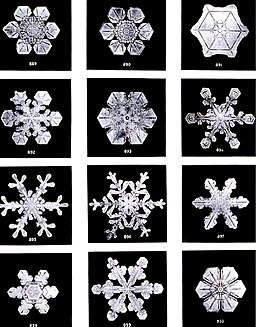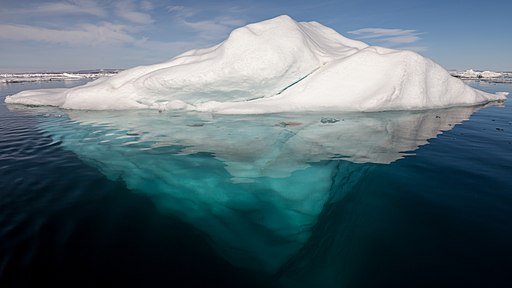Contents
Hydrogen bonds and temperature
Evaporative cooling describes the process of liquid evaporation leaves a surface cool. The energy from the heat that is present is transferred to water in sweat where water molecules use this energy to escape.

Credit: Provenzano15 [CC BY-SA 3.0]
A calorie is defined as the amount of energy required to warm one gram of liquid water by 1ºC. Liquid water requires an abundance of energy to boil because of the hydrogen bonds retain molecules instead of evaporating to release that energy.
Ice

Hydrogen bonds of water guide the structure of ice. Credit: Danski14 [CC BY-SA 3.0]


Desnity of froze water (ice) is less than liquid water. Liquid water is densest at 4°C. Credit: Klaus-Dieter Keller & Jeremy Seto [CC-BY-SA 3.0]

Credit: AWeith [CC BY-SA 3.0]



